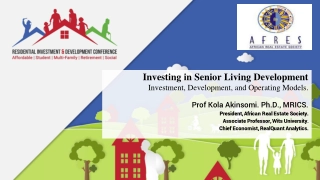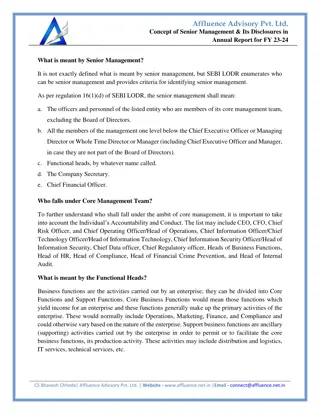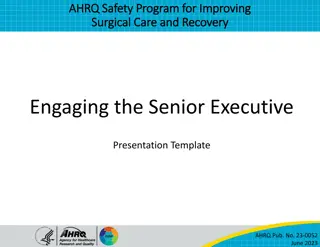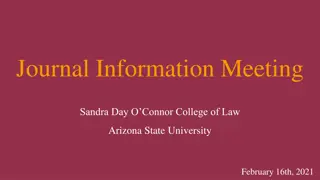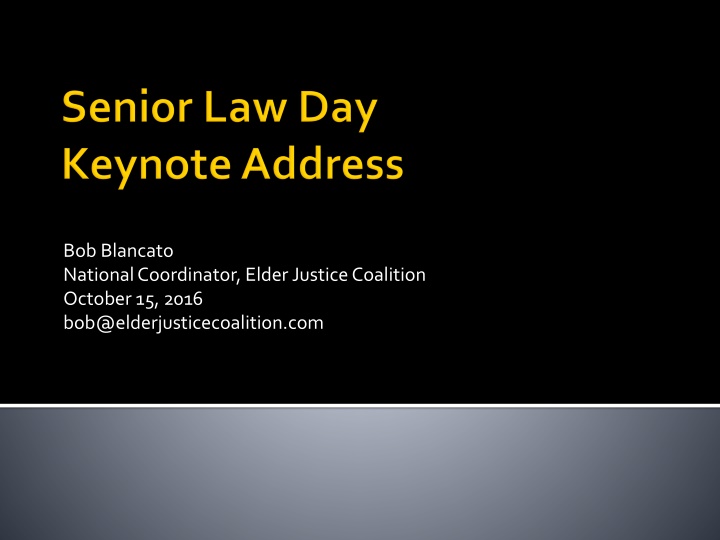
Planning for Successful Aging and Policy Implications - A Look at Destiny Determination
In 2016, the focus on determining destiny and planning for successful aging is crucial. Bob Blancato discusses the impact of upcoming elections on our nation's destiny and addresses key issues like ACA, Medicare reforms, and Social Security. As demographics shift, it's essential to plan for successful aging, especially with the increasing life expectancy and the influence of the boomer generation on society. The need for different Medicare approaches and policy reforms is emphasized.
Download Presentation

Please find below an Image/Link to download the presentation.
The content on the website is provided AS IS for your information and personal use only. It may not be sold, licensed, or shared on other websites without obtaining consent from the author. If you encounter any issues during the download, it is possible that the publisher has removed the file from their server.
You are allowed to download the files provided on this website for personal or commercial use, subject to the condition that they are used lawfully. All files are the property of their respective owners.
The content on the website is provided AS IS for your information and personal use only. It may not be sold, licensed, or shared on other websites without obtaining consent from the author.
E N D
Presentation Transcript
Bob Blancato National Coordinator, Elder Justice Coalition October 15, 2016 bob@elderjusticecoalition.com
What a great theme for this year Determining Your Destiny Can apply to so many topics not least of which is Who gets elected on November 8 and what does that do to our nation s destiny? Not a crystal ball session but there are two things I would be interested in seeing
Our first African American President transferring power to our first woman President Or whether Trump emblazons his name on top of the White House Let s hope before it is over that some policy can creep into the picture vs. just the outsized personalities
Issues will have to be addressed in 2017 with implications Future of the ACA and Medicare reform within Future of Medicaid (ACA expansion or block grant) Future of Social Security (this is the time to do it) Chronic care management legislation Advance planning legislation (Warner) Tax reform (implications for LTC and caregivers) Vote your interests but vote!
Determining Destiny as it relates to our own aging is our focus today. Clearly the second part of the theme Understanding the Need to Plan is vital Life is a planning process As children we had a lot of our lives planned for us. As we got older we gained more autonomy to plan After we get past a certain age it can be a combination of planning your own destiny and having others either help or do
We just know in 2016 more people than ever are needing to plan for successful aging The predicted demographic revolution is here Life expectancy is now 78 Seen a 32.5% percent increase in those 60 and over just since 2004 Fastest growing groups: 85 plus, older minorities 72,000 centenarians 2x number from 1980
And the boomersyoungest is now 52 and oldest 70. And as they have done in past they are making their impact on society One example they are changing Medicare More preventive benefits in past 10 years than the previous 40 in Medicare ACA as a leading example need for a different Medicare
Planning throughout the lifespan for later life is key If retirement, however defined, is trigger there are really 5 phases of planning
When you enter workforce and set aside funds for retirement or choosing employer based on what they do on retirement savings or pension plan Also in Phase 1 earning credits for Social Security Phase 1 can last 30 years or more
Either when you are 50 or 15 years from retirement, whichever is first Scenario planning happens here good and more challenging scenarios When to collect Social Security reduce risks to retirement savings possible purchase of LTCI, even end of life provisions and all related legal documents
Day you retire until age 70 Key: clear communication channel with family members on money, living choices, health care. Fine tuning of income and expense projections including minimum distributions from IRA s and 401(k) s 100 may be the new 80
Roughly starting at 70 and lasts as long as physically and mentally functioning. Focus on autonomy changes Examine steps when family needs to help make decisions Prepare for caregiving and beyond if needs are greater
Things are worse; day to day functioning is a challenge Here is where planning done in phases 1-4 proves most valuable
Aging in place Aging with assistance Dependent aging
Only 3.2% (1.5 million) of older adults live in institutionalized settings like skilled nursing facilities (traditional nursing homes ) (ACL) Another 1.2 million or so live in assisted living and other residential care that isn t skilled care (AARP) The remainder live in the community or well over 90%
$205 per day or$6,235 per monthfor a semi-private room in a nursing home $229 per day or $6,965 per month for a private room in a nursing home $3,293 per monthfor care in an assisted livingfacility (for a one- bedroom unit) $21 per hour for a home health aide $19 per hour forhomemakerservices $67 per day for services in an adult day health care center
According to Economic Policy Institute analysis Median working-age couple has only $5,000 saved for retirement 70% have less than $50,000 saved Median couple in their late 50s or early 60s has saved only $17,000 About 43% of working-age families have no retirement savings at all Among those who are five to 10 years away from retirement, 39% have no retirement savings
Happy National Aging in Place Week! The burgeoning aging in place movement being driven by boomers and those who see them as an attractive market In fact we have a plethora of terms in our language today in this area Livable community Age friendly cities Villages
All built on same premiseallow people to age and age successfully where they prefer in their homes and in their communities. Yet, have these communities be prepared Planning for aging in place in is central Happening in Northern Virginia and around the nation One definition provided by ageinplace.com: aging in place means living in the home of your choice as you grow older for as long as you can while getting all the assistance and services you need to maintain your safety and quality of life Yet it is very individual in nature
One central element: being honest with ourselves when planning. Successful aging in place is about every aspect of your life and the lifestyle you choose Education as the starting point: what happens to your body, your mind as you grow older
The interrelationship between your home, community, needs, finances Knowing options and knowing choices Knowing what resources exist to help Also critical is to know what different services and programs cost A survey by care.com revealed: 25% of those surveyed estimated nursing home costs to be about half of what they are. 54% said they would prefer having the sex talk to their kids than to talk to older parents or relatives about senior care
Once proper planning is doneaging in place may not be for everyone If you have limitations in ADL s or other factors that either now prevent you or will prevent you from caring for yourself, it may not make sense to age in place in your own home. Also for some it may be better to age in place in other housing than their own multi-generational housing, etc. to avoid the very serious problem of isolation So key point: successful aging in place is not limited to one s own home
Urban Institute Study notes: In 2011, 6 million Americans over 65 needed help with two or more ADL s, or 1/6 of total population Of these only 9 percent received long term nursing care 23 percent paid in home care 53 percent unpaid assistance from family
Study also said that three in five seniors will need little or no long term care 1/5 face moderate costs of $25,000-150,000 and 1/5 over $150,000 Economic security in later life must include finding ways to deal with long term care costs Today in general we have Medicaid for the very poor and private pay for the very wealthy Big group in middle that need some help
Important that this Senior Law Day be held Opportunity to think, learn, act For some it might be a wake-up call on need to plan For others, it might serve as validation that they are on the right track Planning is intensely personal in nature However, policy solutions which can aid in the process need to be advanced
In the aging in place arenait is about having services available in an age friendly fashion in communities It is about coordination of housing, transportation, nutrition services, legal services and public safety to name a few Federal level: greater funding for the Older Americans Act, tax incentives for age friendly housing and transportation, continued work from the ACA on care transitions. Also greater funding for elder justice
For LTC/LTSS, it is about a strong Medicaid that continues its direction of funding more home and community based services Also about tax credits for family caregivers and tax incentives for purchasing qualified long term care insurance Developing greater catastrophic coverage through a public private partnership
So as we work to determine our destinyyes it is about planning Also about advocating for policies that result in better community supports for those who cannot save enough or those whose savings get wiped out by a catastrophic event beyond their imagining. And it s easy to fall into either of those categories Today, you will learn from many experts who have many resources to take advantage of take notes!
bob@elderjusticecoalition.com www.elderjusticecoalition.com Margolis and Bloom: http://www.margolis.com/our- blog Social Security: www.ssa.gov CFPB Office of Older Americans: http://www.consumerfinance.gov/older-americans/ http://www.urban.org/features/how-retirement- changing-america NatlCouncil on Aging: https://www.ncoa.org/economic-security/money- management/ http://longtermcare.gov/

